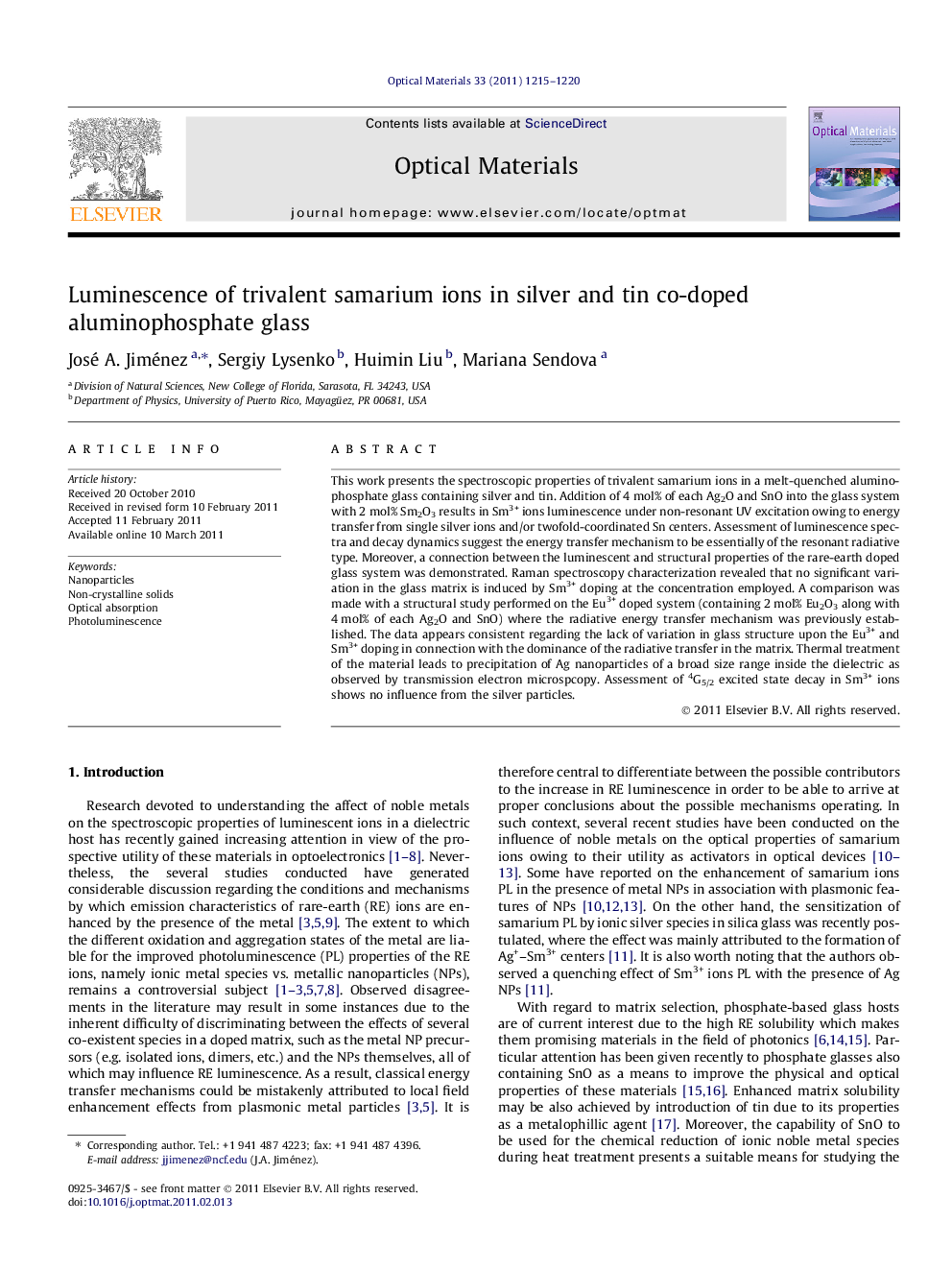| Article ID | Journal | Published Year | Pages | File Type |
|---|---|---|---|---|
| 1494981 | Optical Materials | 2011 | 6 Pages |
This work presents the spectroscopic properties of trivalent samarium ions in a melt-quenched aluminophosphate glass containing silver and tin. Addition of 4 mol% of each Ag2O and SnO into the glass system with 2 mol% Sm2O3 results in Sm3+ ions luminescence under non-resonant UV excitation owing to energy transfer from single silver ions and/or twofold-coordinated Sn centers. Assessment of luminescence spectra and decay dynamics suggest the energy transfer mechanism to be essentially of the resonant radiative type. Moreover, a connection between the luminescent and structural properties of the rare-earth doped glass system was demonstrated. Raman spectroscopy characterization revealed that no significant variation in the glass matrix is induced by Sm3+ doping at the concentration employed. A comparison was made with a structural study performed on the Eu3+ doped system (containing 2 mol% Eu2O3 along with 4 mol% of each Ag2O and SnO) where the radiative energy transfer mechanism was previously established. The data appears consistent regarding the lack of variation in glass structure upon the Eu3+ and Sm3+ doping in connection with the dominance of the radiative transfer in the matrix. Thermal treatment of the material leads to precipitation of Ag nanoparticles of a broad size range inside the dielectric as observed by transmission electron microspcopy. Assessment of 4G5/2 excited state decay in Sm3+ ions shows no influence from the silver particles.
Research highlights► Influence of silver and tin on Sm3+ luminescence in glass. ► Energy transfer mechanism elucidation and connection with glass structure. ► Effect of Ag nanoparticles on material optical properties.
